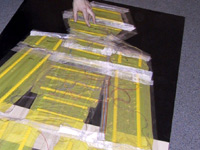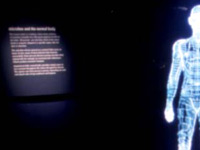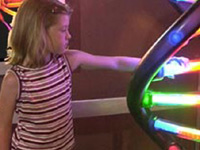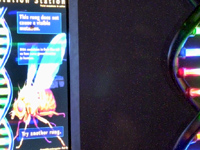 |
||
| softcore news < studios < articles < hardcore firms < jobs < schools < links < calendar < sources < discussion < how to < Check out Bruce Sterling's and Engram's Offsite! |
||


> > archived articles > write for core! be famous!
Physical
Computing: A Curious Animal The fastest land mammal is the cheetah. It fills a predatory niche that no other animal occupies. If, for some reason, exceptional speed were not required, the cheetah would most likely go extinct. Its unique adaptations of paw structure and oxygen intake would no longer provide advantage in food acquisition, and it would not be able to compete with the many generally adapted predatory animals that hunt at more average speeds. Specialized organisms often have unique body shapes and functions that make them both perfectly suited to their niche, but also susceptible to even small changes in their environment or food source. Similarly, physical computing,
in many respects, can be seen as a specialized form of computing--uniquely
adapting to the niche of artistic expression and cultural trends.
Though we often use a general-use computer as our medium, the end
result is often a sculpture or installation unique in form and function,
and of highly specific use. Invariably, physical computing pieces
don't score well in general utility, but achieve artistic heights
and realms that no desktop alone could dream of. Like a specialized
organism, the success and longevity of any given physical computing
piece is relative to its targeted application, while susceptible
to small cultural climactic changes.
Many of the evaluation questions hinged on information that was only found on a text panel next to Shadowman. This vital text explained the concept of "normal body ecology," and essentially prepared the visitor for exploring the interactive. The problem was that Shadowman was immediately next to it, and the difference in dynamic from static-wall-text to physical-interactive made very few people even approach the text. Additionally, though Shadowman was made using the flexibility of computers, it was installed as a sculptural element with dimensions and a presence that made it relatively inflexible to broad changes in content. Had Shadowman been implemented on a generally adapted touch screen, all the content issues could have been addressed relatively quickly and easily. Ultimately, I felt the evaluation
itself was focused more towards an analysis of the absorption of
the wall text, which was physically separate from Shadowman,
without exploring the value of such an interface for engaging people
in a physical and social experience about normal body ecology. Shadowman's
biggest strength was its ability to draw people in and create
a social context for learning and exploration, filling a niche that
a more standard interface could not fill.
Though Mutation Station
was designed for a specific purpose and location, I hoped that its
ability to show any combination of base pairs in sculptural form
would add to a broader utility. I dreamed of other versions made
for the classroom, which would adapt via software to shifting course
work. The thinking behind this was to explore if Mutation Station
was flexible enough in design to adapt and survive in a different
niche. Despite the interest and much discussion to this end, a short
run of multiple Mutation Stations was never created, largely
because the cost proved prohibitive. Today, Mutation Station
is carefully packed away somewhere in a storage facility, awaiting
the right conditions to emerge for another opportunity to entertain
and educate.
Joseph Stein holds the position of Embedded Interaction Designer at the American Museum of Natural History in New York City. In this capacity he has created new forms of environmental and sculptural interactives, carving inventive landscapes for the visitor experience. These highly acclaimed, award-winning exhibits have included projects such as Mutation Station and Shackleton Sextant Interactive. In addition to his work at the museum, he has taught the masters course in Physical Computing at New York University and lectured at Harvard Graduate School of Design. He has spoken about his work at numerous conferences and public gatherings, including the lab at Interval Research and the computer conference, SIGGRAPH. This past winter he held a residency at the Santa Fe Art Institute, New Mexico.
|
||||||
|
|
||||||
| >>
back to top >> back to core |




